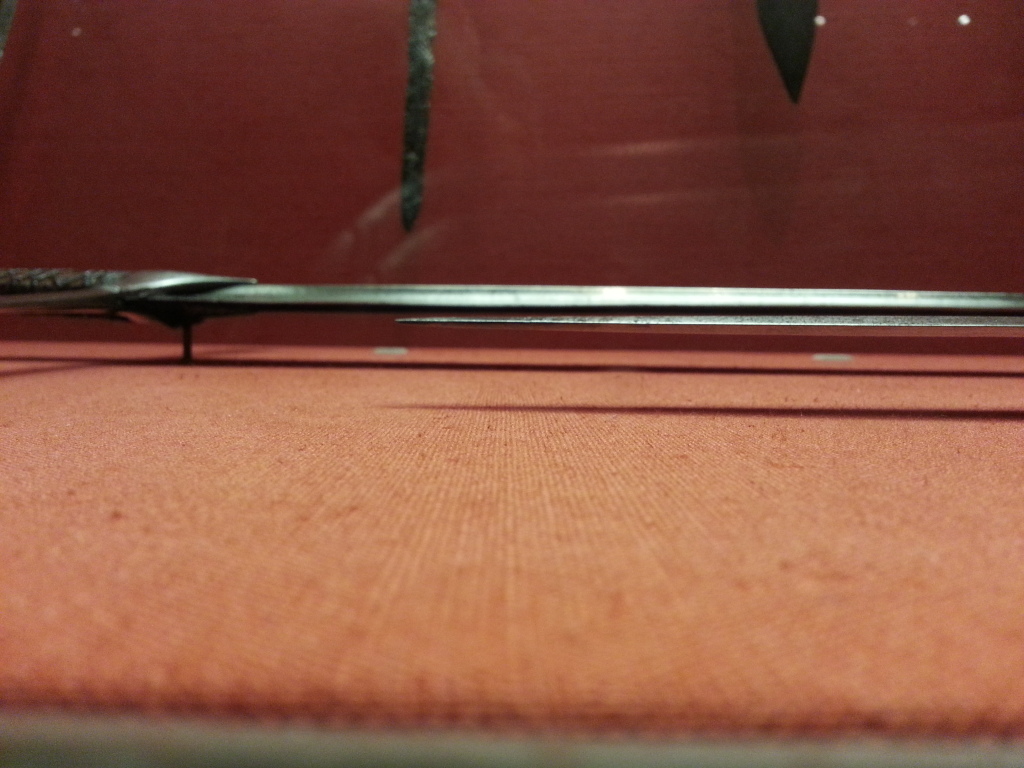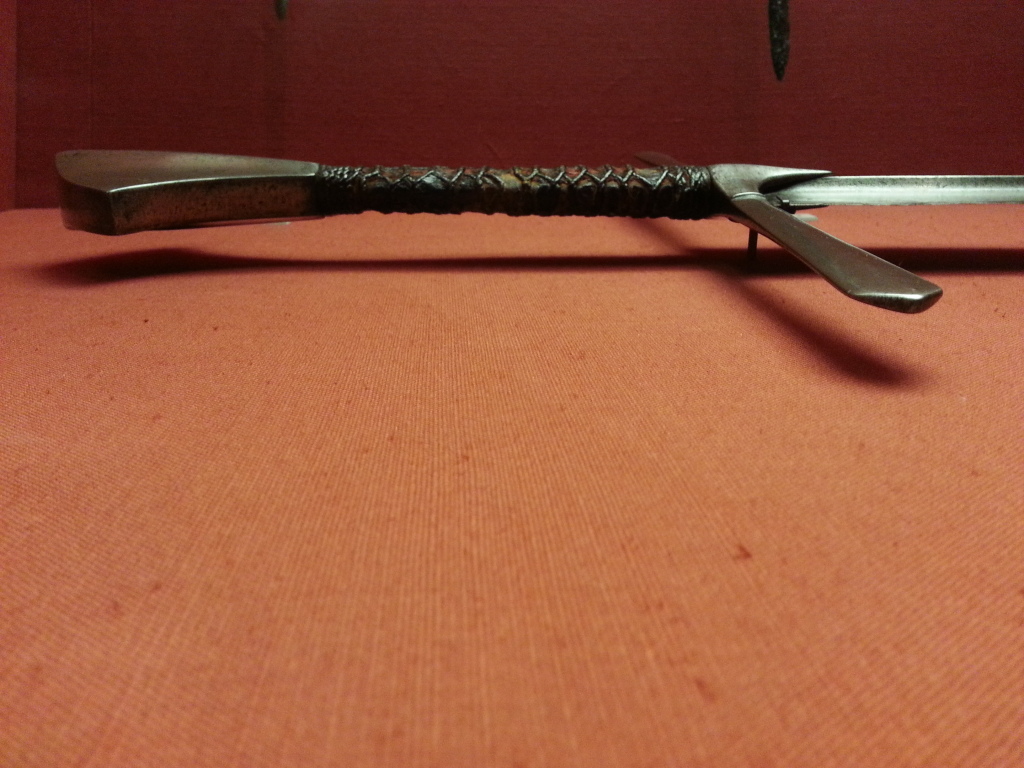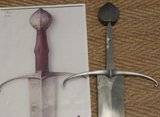http://s1259.photobucket.com/user/bheff1066/l...20of%20art
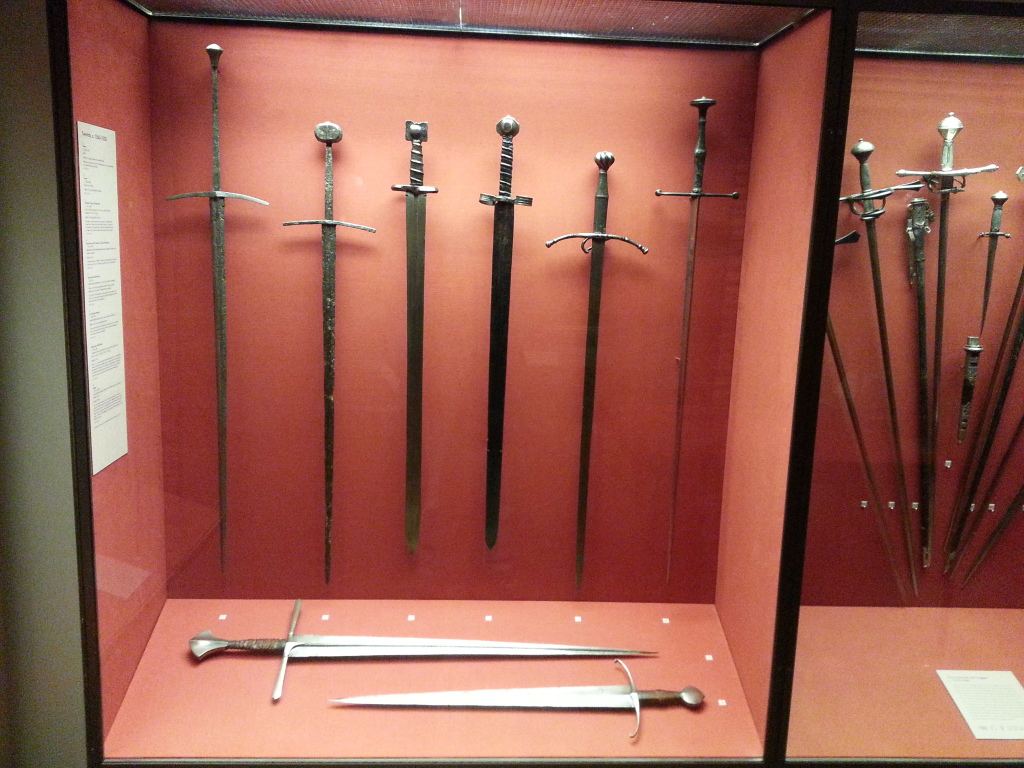
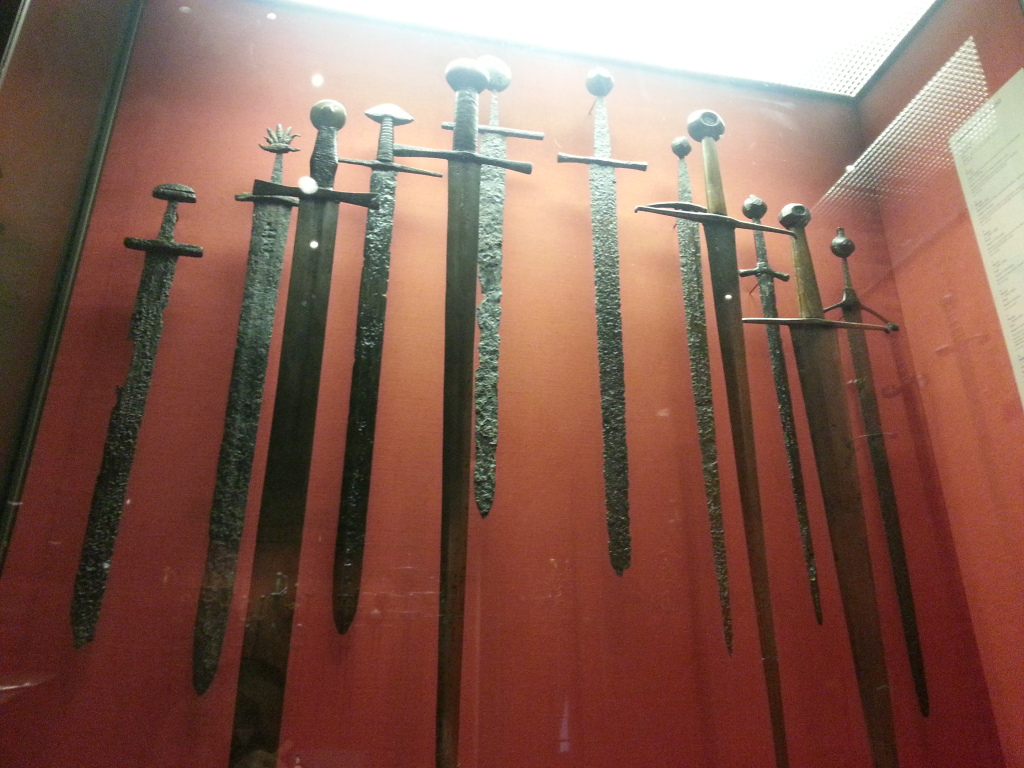
I pulled a few out that I found interesting. I tried to take some close ups and some odd angle shots of these swords since most of this pictures have been posted before. Check the link for all pics.
This is interesting in that the pommel appears to be hollow or partially hollow. Notice the hole in the back.
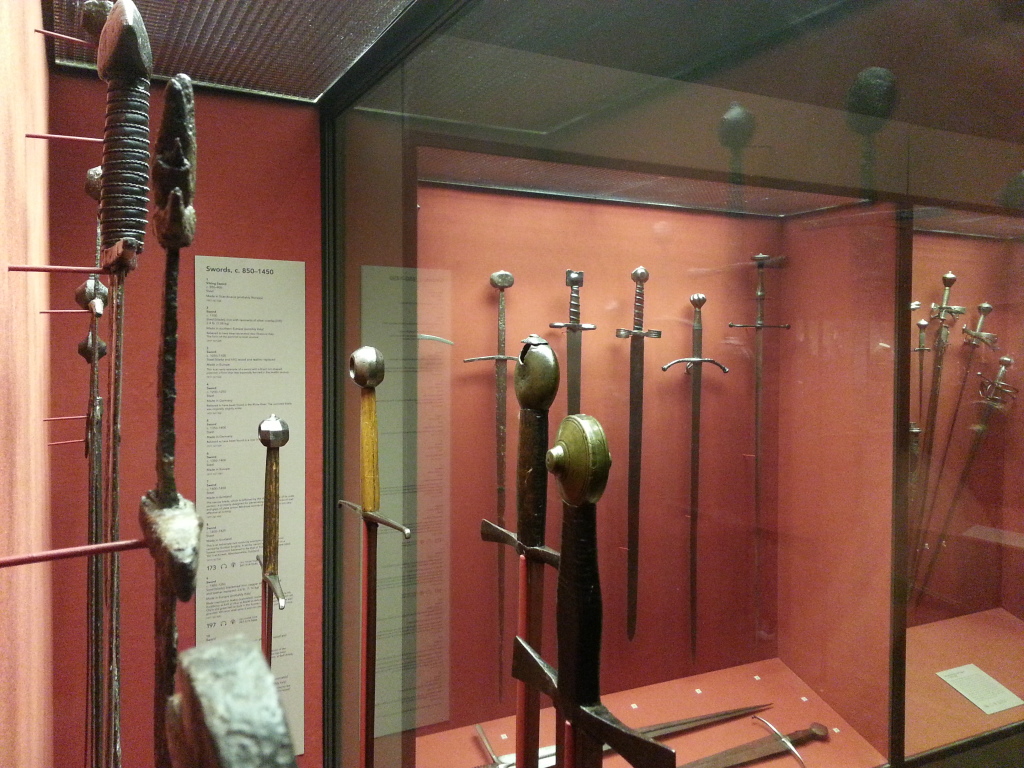
This complex hilted longsword is not a double edged sword but is actually a saber like blade with only one edge. At first glance it appears to be a double edged sword, but notice the pic of the one side.

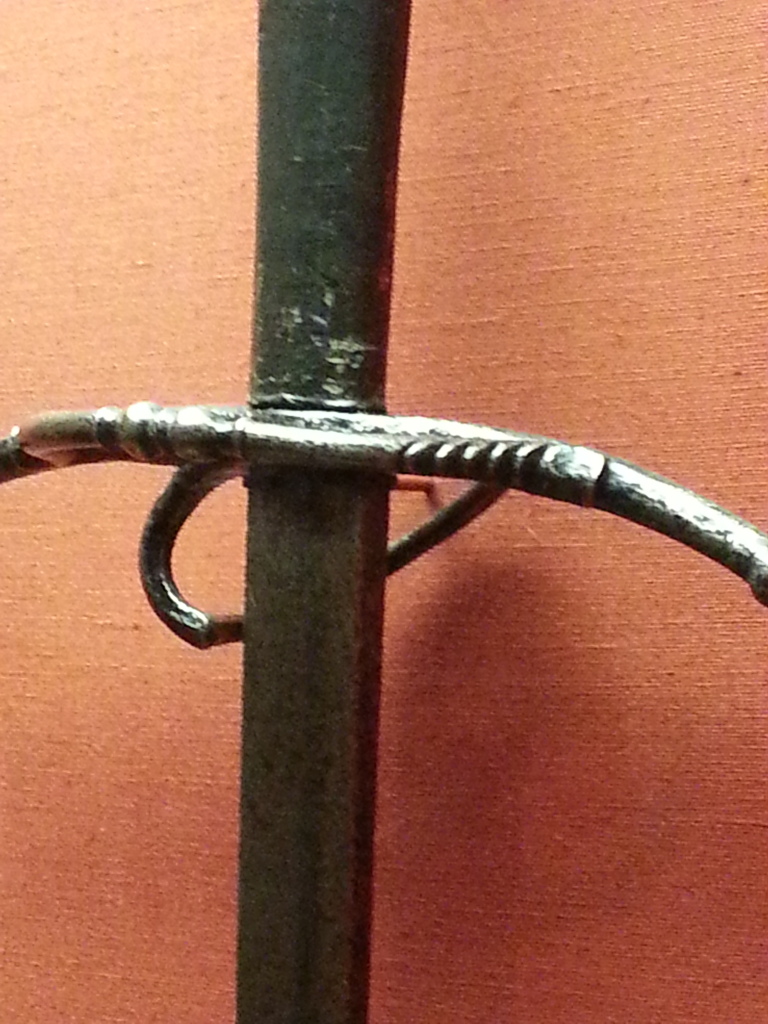
This sword is described as being Italian origin but it screams Viking sword to me but with a very atypical pommel. It even appears to have had some inlay, I wonder why they describe it as Italian?
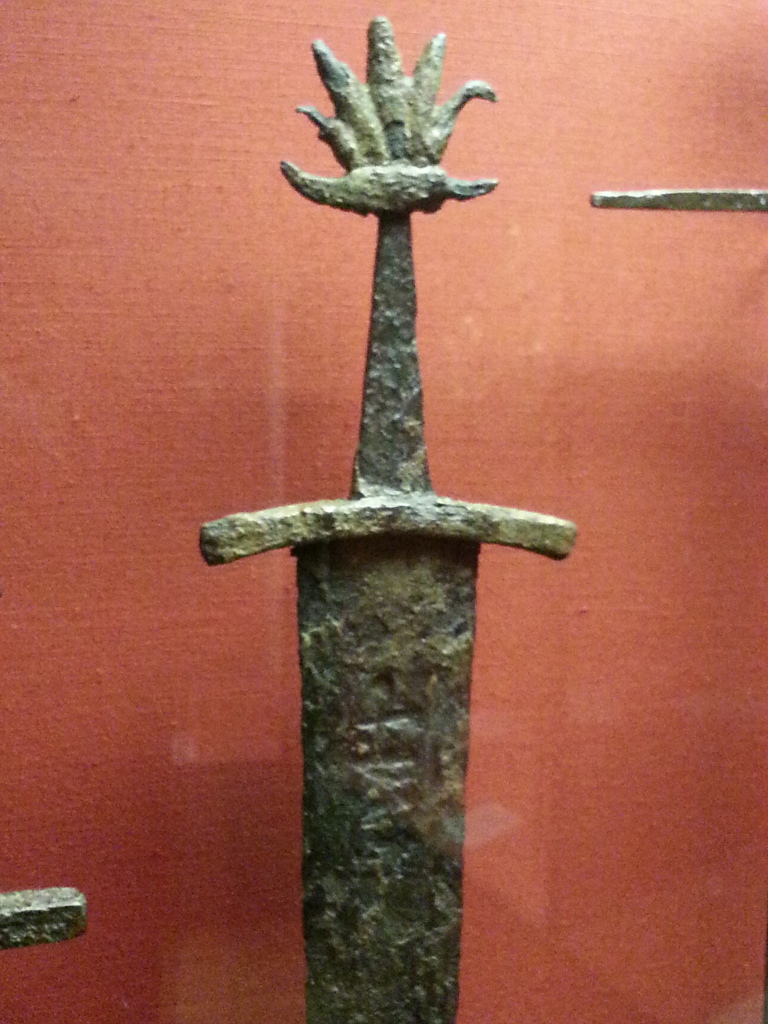
The Alexandria Arsenal swords ( the 4 in the front) are all beauties. The XIIIb has an extremely thin cross section and super wide blade with almost no profile taper. I bet this thing cut like crazy. The Scottish sword is actually quite small all around, hard to tell from the pics but it just seemed almost tiny up close and its not just because its in the back.
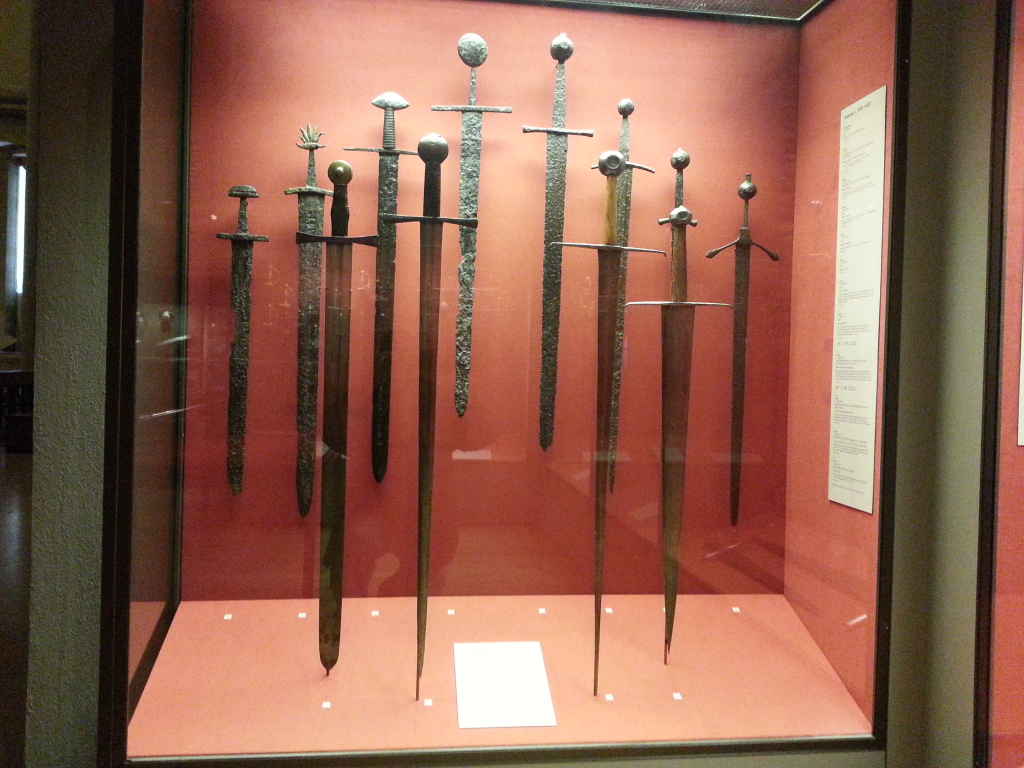
The central ridge on this sword is insane...and the overall sword projects major size...its a big beefy warsword. You can see from the last 2 pics how thick the blade at the base is. This and the other one right next to it...the smaller XVIII are probably the gems of the medieval sword collection IMO. Too bad they still are not displaying the Cromwell sword...it's fantastic but has not been on display for quite some time.

